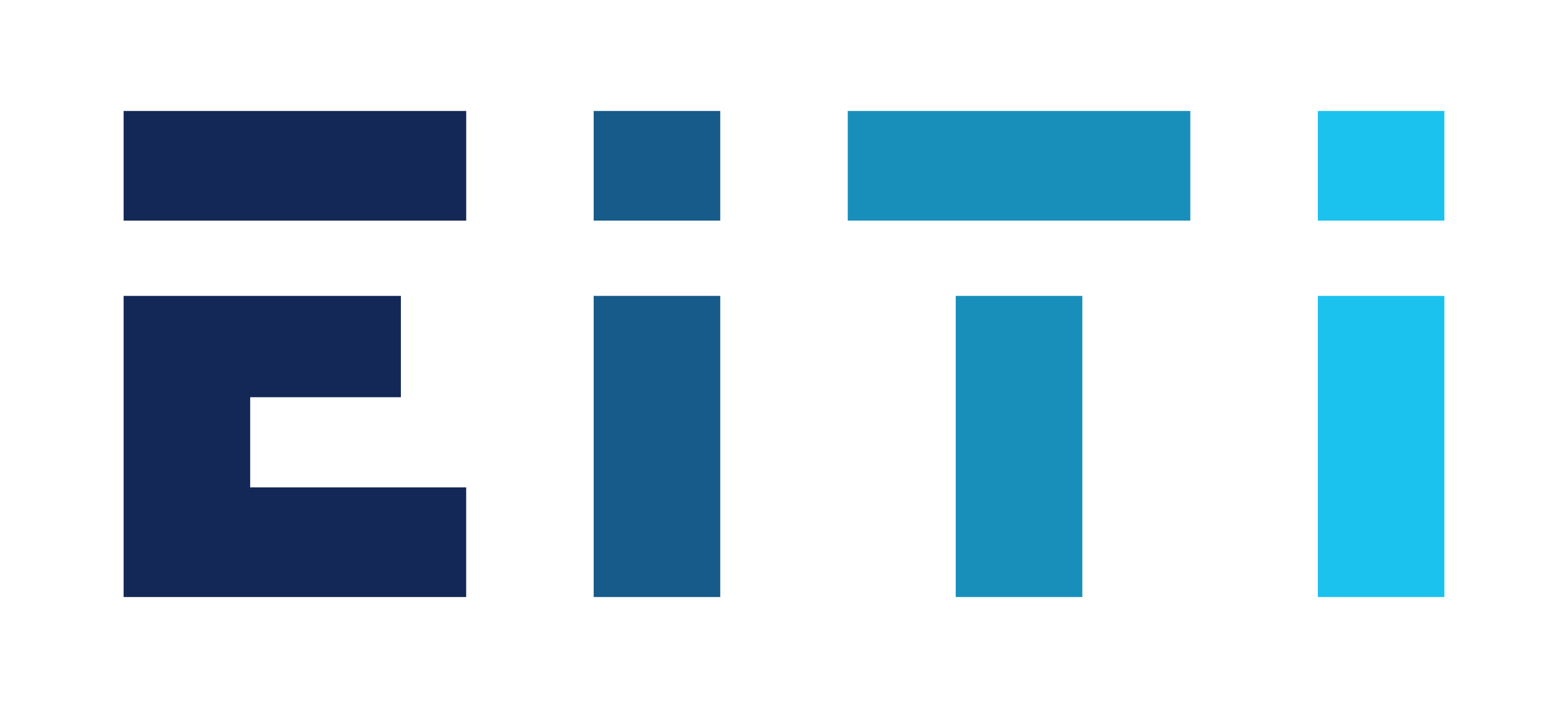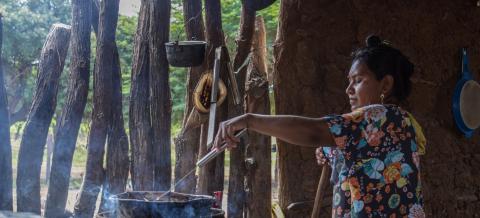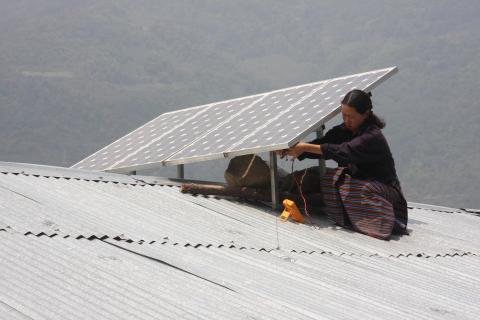
Summary
There are structural barriers that impede women from equally participating in and benefiting from the natural resource sector. In response to stakeholder demands for more attention to gender issues related to extractive sector governance, the EITI Standard was revised to include provisions that promote diverse participation on multi-stakeholder groups (MSGs), gender-sensitive data disclosures, and outreach and dissemination activities to foster dialogue and improve data accessibility for women and men.
This note provides guidance and examples for MSGs to implement these provisions and promote gender-responsive EITI implementation. It is structured in line with the related requirements of the EITI Standard:
- Section 1 provides guidance on promoting women’s representation and meaningful participation in MSGs, in accordance with Requirement 1.4.
- Section 2 covers employment data disaggregated by gender, in accordance with Requirement 6.3.
- Section 3 provides guidance on the type of inclusive outreach and dissemination activities to better adapt to the needs of different genders and groups, in accordance with Requirement 7.1.
- Section 4 provides guidance on documenting progress on gender or inclusiveness-related activities in EITI implementation, in accordance with Requirement 7.4.
The final section “Going further” looks at gender as a cross-cutting issue that affects EITI implementation more broadly, and outlines gender-related linkages to other EITI requirements. It highlights opportunities for MSGs to ensure that EITI implementation is gender-responsive and to better understand how stakeholders interact with EITI data.
It is important to note that gender considerations, and their impact on women’s and men’s access to decision-making and employment in the extractive sector, are highly contextual. The measures that are needed to strengthen women’s participation will differ per country, subsector and sector size. MSGs should therefore be mindful of applying this guidance according to their own country contexts.
MSGs are encouraged to go beyond this guidance to identify and address the specific needs of marginalised groups, with a view to ensuring that EITI processes are inclusive, representative and consider the interests of all stakeholders.
- Are EITI processes and governance structures inclusive?
- What is the gender disparity in extractive sector employment? How can this data inform gender-responsive policies?
- Are women and marginalised groups engaged in data dissemination programmes?
- What actions did the MSG take to promote women’s participation and representation in EITI implementation?
Key concepts
Gender refers to the socially constructed roles, behaviours, activities and attributes that a given society considers appropriate for individuals based on their assigned sex. Gender is relational and refers not simply to women, men or other gender groups, but to the relationship between them. Although notions of gender are deeply rooted in every culture, they are also changeable over time and have wide variations both within and between cultures.
Gender responsiveness means understanding and considering the different needs and experiences of men and women and how these affect the execution and outcomes of specific programmes or initiatives. In the context of the EITI, gender-responsive implementation means that women’s voices and experiences are included in the EITI process with a view to ensuring that natural resource governance serves the interests of all citizens.
Meaningful participation is defined by Oxfam as going “beyond counting women to include women’s ability to exercise voice, engage in leadership, and influence decision-making”.
Using gender sensitive language means speaking and writing in a way that does not discriminate against a particular sex, social gender or gender identity, and does not perpetuate gender stereotypes. Given the key role of language in shaping cultural and social attitudes, using gender-inclusive language is a powerful way to promote gender equality and eradicate gender bias.
Intersectionality and inclusiveness
While this note speaks of the participation of women, it is necessary to clarify that women are not a homogenous group. Other societal identifiers – indigeneity, race, class, location, age, religion or ability – affect different stakeholders’ experiences of the extractive sector and their access to information and decision-making.
When seeking to include women in EITI processes, MSG should be conscious of these social factors. It is in the overlap of social identifiers that some women face multiple forms of barriers when accessing information and participating in the EITI process, as well as experience discrimination. This is known as intersectionality.
Moreover, gender is just one aspect of inclusivity. Marginalised groups should be considered more broadly when ensuring equal access to, and participation in, natural resource governance structures.
Overview of steps: Requirement 1.4
| Steps | key considerations | examples |
|---|---|---|
|
Step 1: Identify barriers to women’s representation |
|
|
|
Step 2: Take actions to promote representation and meaningful participation |
|
|
|
Step 3: Document progress and establish accountability mechanisms |
|
|
How to implement Requirement 1.4
Step 1: Identify barriers to women's representation
Women’s under-representation is often linked to specific barriers faced when accessing decision-making spheres. MSGs could identify the barriers preventing or hampering women’s representation and analyse whether and how the MSG’s structure, nominations process and practices affect the ability of women to be represented on the MSG. It should also consider what measures could help reduce or overcome these barriers. The analysis could consider other societal identifiers (e.g. class, age, ethnicity, indigeneity) and existing power relations within the MSG.
To help support women’s representation in EITI processes, MSGs could consider the following in its governance structures:
- Ensure the MSG nominations process is transparent, well-publicised and consistently applied;
- Set term limits for MSG members to encourage turnover and create opportunities for representatives from diverse backgrounds;
- Outline the importance of women’s representation, or the need to work towards gender parity, in the MSG Terms of References (TORs).
Promoting diverse participation on MSGs
Guinea
ITIE Guinée’s civil society constituency amended its Terms of Reference to include a formal requirement that a third of its MSG representatives be women. Subsequently, women participants increased from one to three of the group’s 11 members. Although the target of reaching a third of MSG representatives fell short, this change contributed to tripling women’s participation. ITIE Guinée continues to engage with all MSG stakeholders to monitor progress on this issue.
United Kingdom
Recognising that its MSG representation could be more diverse, the UK EITI Civil Society Network (CSN) reviewed its nominations process to encourage more representation by women. However, a gender stocktake by the EITI International Secretariat indicated that women’s permanent member participation in the UK MSG decreased from 33% in 2019 to 25% in 2021. As such, in its 2022 work plan, UK EITI included the aim to work on greater gender diversity in the MSG and greater awareness of the need for gender parity.
Step 2: Take targeted actions to promote representation and meaningful participation
MSGs can take specific and targeted actions to support the representation of women and tackle barriers to participation. Ideally, these activities should be based on the analysis of obstacles and consultations undertaken under Step 1.
Targeted actions could include:
- Adopting a formal requirement for a minimum threshold of women representatives per constituency (e.g. one third of MSG members).
- Building the capacity of potential women representatives through EITI trainings or mentorship programme with experienced MSG members.
- Considering gender balance when creating MSG committees.
- Making a public pledge that each MSG constituency will endeavour to achieve gender parity. This could be complemented by setting incremental goals (e.g. doubling women’s representation two years, and achieving 40% representation within four years).
Some of these activities could be integrated into the MSG’s EITI work plans to help ensure their implementation is monitored and funding is made available.
However, women’s representation on the MSG goes beyond being named as representatives. It is also essential that women exercise influence and leadership in decision-making and that their voices be heard. The EITI Standard has requirements that can help support the participation of women in MSGs. These include the need to agree on clear public Terms of Reference (ToR) for the MSG’s work (Requirement 1.4.b) and to ensure sufficient notice of meetings and timely circulation of documents before their debate and proposed adoption (Requirement 1.4.b.vii).
Further actions could be taken to support meaningful participation of women and inclusive decision-making. MSGs could consider the following approaches when facilitating and planning MSG meetings:
- Alternating who chairs the meeting or assigning different participants to lead the discussion during various moments on the agenda to guarantee wider participation.
- Considering gender balance and diversity when inviting speakers or expert to MSG discussions.
- Supporting the logistical participation of members, especially if they are under-resourced, and in a way that considers the gendered barriers women may face (e.g. providing transport, access to virtual meetings, scheduling meeting times that do not coincide with caregiving duties).
- Designing capacity-building opportunities to strengthen the confidence and speaking skills of MSG representatives.
Capacity-building
Several EITI stakeholders have identified the lack of women operating in extractives governance, or a perceived lack of women with sufficient expertise or seniority, as critical challenges to improving women’s representation on MSGs. This argument should be seen as a challenge to be overcome rather than a reason for not working towards gender parity.
Women’s low participation in extractives governance is often due to women having historically been excluded from decision-making spaces, opportunities to build skills and leadership capacities. Women’s skills and expertise can be developed through capacity-building programmes and MSGs could play a role in promoting them.
Zambia: Gender and EITI work planning
Zambia’s 2021-2022 EITI work plan includes specific activities on gender, such as conducting dedicated trainings and workshops and establishing a gender policy and strategy.
| Output |
4.0– Gender mainstreaming and training |
|---|---|
| Activities |
4.1 Oxfam gender awareness-raising and training |
Step 3: Document progress and establish accountability mechanisms
MSGs should publicly document their progress on promoting inclusive participation to help ensure they are held to account. Measures could include:
- Where MSG nominations and elections result in less than 40% representation of women for specific constituencies, requiring constituencies to issue a statement explaining what actions they took to consider gender parity in their nominations, what challenges they met, and what actions or support are necessary to improve gender diversity in the future.
- Tracking progress on the gender composition of the MSG and ensuring a list of MSG members, chairs and alternates is publicly available and regularly updated.
MSGs are also encouraged to track the progress of their gender-related work in their Annual Progress Reports (see section on Requirement 7.4).
Mongolia: Identifying opportunities for action
In its 2019 EITI Report, Mongolia EITI identified a need to take further action to advance gender balance in its MSG, citing plans to ensure parties reach a common understanding of gender equality. This acknowledgment underscores that more needs to be done and can help to hold the MSG accountable.
Overview of steps: Requirement 6.3
| Steps | key considerations | examples |
|---|---|---|
|
Step 1: Determine what employment data should be disclosed |
|
|
|
Step 2: Report, monitor and analyse employment data |
|
|
How to implement Requirement 6.3
Step 1: Determine what employment data should be disclosed
The MSG should determine what gender-disaggregated data is needed to better understand the sector’s contribution to employment, the economy and project-level impacts in communities. Additionally, MSGs could consider producing a data template for companies with definitions to allow for data harmonisation. This should consider the feasibility of company disclosures with respect to national data privacy policies.
We cannot manage what we cannot measure.
Reporting disaggregated employment data
Burkina Faso
In its 2019 EITI Report, Burkina Faso included employment data disaggregated by gender, company, employment level, employment status and national status.
Nigeria
As well as disaggregating data by gender, occupational level and national/expatriate status, Nigeria’s 2019 EITI Report includes information on workers with disabilities.
Colombia
As well as disaggregating employment data by gender and occupational level, Colombia’s 2019 EITI Report includes data on the salary range of male and female direct and indirect employees.
Philippines
In its 2019 EITI Report, PH-EITI included its gender reporting template for companies. The template covers project-level employment data, local and indigenous disaggregation, staff and contractual status, nature of work, union membership, employee pay and benefits, and gender and diversity policies (including parental leave, sexual harassment in the workforce, compensation and training opportunities, among others).
Step 2: Report, monitor and analyse employment data
Collecting, publishing and monitoring employment data through EITI reporting provides a basis for stakeholders, policymakers and industry leaders to create sector strategies that mitigate gender gaps in extractive sector employment.
MSGs should track the extent to which companies are submitting gender-disaggregated employment data. Where companies fail to comply, MSGs should examine the reasons behind it and create strategies to overcome them in collaboration with industry stakeholders and local industry organisations.
It is recommended that MSGs use gender-disaggregated employment figures as part of communication campaigns, to spur conversations around women’s participation in the sector. MSGs can also include prior employment data to enable understanding of how trends in the sector have changed over time.
Philippines: Addressing gender gaps in large-scale mining
EITI disclosures in the Philippines have shown that only 12% of the mining workforce in the Philippines is female, and few women occupy leadership positions. Recognising the prevalence of structural gender inequality in the extractive sector, Philippines EITI conducted a study on the social, economic and environmental impacts of large-scale mining on women, as well as barriers they face to participate in the sector.
Published in October 2020, the study presents several recommendations for addressing key issues and policy gaps, including amendments to the Philippine Mining Act of 1995 to incorporate gender-sensitive provisions. The study also highlights the environmental impact of mining on women and reports that women had little opportunity to be involved in managing companies’ social development and mining programmes.
Integrating gender in EITI reporting and implementation has remained a priority for PH-EITI, which has been disclosing gender-disaggregated employment data since 2016. A gender technical working group has been established to help EITI Philippines implement some of the report’s recommendations.
Senegal: Using gender data to spur conversation and action
Senegal’s EITI reporting showed that among 23 reporting companies, women made up only 9% of the workforce in 2018. This data has fed into wider public debates on Senegal’s extractives industry. Civil society groups such as Women in Mining (WiM) Senegal have used these disclosures to inform their plans to boost women’s participation in the sector. Reforms are being implemented to promote greater inclusion of women in the supply chain and in local extractives sector policies and projects. For example, Article 115 of Senegal's 2016 Mining Code states that “the local development plan must integrate projects for the empowerment of women." Additionally, efforts are to introduce gender-sensitive recruitment processes in companies are now considered.
Overview of steps: Requirement 7.1
| Steps | Key considerations | Examples |
|---|---|---|
|
Step 1: Develop a tailored and strategic gender-responsive communications plan |
|
|
|
Step 2: Ensure gender-responsive outreach activities |
|
|
How to implement Requirement 7.1
Step 1: Develop a tailored and strategic gender-responsive communications plan
Many implementing countries have communications plans to support data dissemination and debate. MSGs should ensure that women and marginalised groups – especially those affected by extractive activities – are considered when identifying key audiences for their communications plans.
When developing a gender-responsive communications plan, MSGs could consider including a breakdown of targeted audiences, the tools and channels needed to reach each audience and the key messages. When identifying the channels and messages for each audience, it is necessary to know how they access information, their informational needs, and what barriers they might face when accessing data (e.g. literacy rate, language, access to technology, comprehension of technical or complex terms). To achieve this, MSGs may consider consulting local women’s organisations, academic institutions or gender experts who know the informational needs of different groups of women. Focus groups with targeted audiences could also help inform the MSG’s communication strategy.
Guyana: Integrating gender in dissemination activities
GYEITI’s Communication Strategy and Action Plan 2021-2025 includes plans to carry out targeted communications initiatives and integrate gender in its data dissemination and messaging. The plan also provides a snapshot of gender issues related to the sector and places outreach to community-based organisations as a moderate priority.
Strategic communications
MSGs can draw on existing resources when developing a targeted and gender-responsive communications plan. A tool developed by the World Bank and UK Foreign, Commonwealth and Development Office (FCDO) provides a useful framework for MSGs to design a strategic approach to their dissemination activities.
| objective |
|
|---|---|
| research |
|
| audience |
|
| activities |
|
| messages |
|
| networks |
|
| channels |
|
| feedback |
|
| costing |
|
Gender-Responsive Communications Checklist
The UN International Organization for Migration (IOM) provides guidance on ensuring communications materials portray specific groups and show diversity. While the toolkit is designed to support gender-sensitive and gender-responsive communications in the context of migration, the guidance can also be tailored and applied to communications on extractives governance.
Gender terms and definitions are continuously evolving. Remember to evaluate communications to ensure gender-sensitive and inclusive language is used and activities are gender-responsive. This checklist can be used to ensure gender-responsiveness was applied in communications.
- Gender-sensitive language is applied and gender-neutral terms are used.
- Women, girls, men and boys are portrayed in non-stereotypical roles.
- Diverse stories of different gender groups are included.
- Informed consent has been obtained and recorded.
- Barriers to accessing information have been identified and addressed for all gender groups.
- Communication activities have been participatory and gender-balanced.
Step 2: Ensure gender-responsive outreach activities
Outreach and in-person events are critical tools for disseminating EITI data and engaging with citizens. Women risk being excluded from events if gender differences relating to people’s ability to participate are not considered and if specific and deliberate measures are not pursued to address barriers. The EITI Standard requires that such activities be socially inclusive, accounting not only for gender but also other factors such as age, disabilities or education.
To ensure women’s participation in outreach activities, MSGs could consider some of the actions below:
- Assess and understand the structural barriers preventing meaningful participation by different groups of women in these activities and develop ways to overcome them.
- Consult women and other stakeholders to ensure meetings are held at times and locations they can attend.
- Consider holding events that specifically target women stakeholders to encourage women to participate fully and speak out on sensitive issues (e.g. workshops on the role of women in the extractive sector, the link between gender issues and natural resource governance, deterrents for women’s participation in the sector).
- Consider organising capacity-building sessions to help different groups of women use and understand EITI data (e.g. a training on tracking extractive payments to governments).
- Consider what practical and logistical support women need to participate in events (e.g. transportation, safety considerations, childcare support).
- Ahead of general outreach events, organise capacity building sessions for women leaders and women’s groups to help them prepare for such events.
- Organise women’s working groups where women may feel more comfortable speaking freely.
- Collect gender-disaggregated data on beneficiaries of outreach activities.
Targeted outreach activities on gender
Several EITI countries have carried out activities to inform and spur debate about gender issues related to extractives governance. ITIE Burkina Faso organised debates and radio shows on the health and environmental implications of artisanal mining, particularly regarding the conditions for women and girls. EITI Colombia hosted webinars on gender equality and best practices in the extractive sector. The EITI in Côte d’Ivoire carried out a series of awareness-raising activities with local communities, which raised the issue of gender responsiveness. These efforts have helped to ensure gender issues are taken into account when addressing extractives governance matters. Monitoring the results of such activities are an additional step forward to reflect on their impact.
In Mozambique, the government and civil society co-hosted a national conference on strengthening the parliament’s the role in ensuring that the extractive sector benefits women, specifically through gender-responsive revenue management policies and practices. The event featured interventions from EITI stakeholders to explore how EITI implementation could support government efforts.
How to implement Requirement 7.4
When documenting progress on gender and inclusiveness, MSGs should refer to activities included in their work plan as well as other related initiatives that were not originally included in the work plan. To report on their activities related to gender, MSGs could consider including a dedicated section in their annual progress reports that highlight the MSG’s efforts related to gender-responsive EITI implementation.
A narrative account of efforts on the action taken for a gender-responsive EITI allows for a deeper understanding of the national context, the MSG’s related activities, and how these activities have contributed to strengthening women’s participation in the EITI process. The narrative section could reflect on key learnings and provide further actions to strengthen gender participation and representation.
When reporting on progress, MSGs could consider:
- What actions did the MSG take to promote inclusive decision-making and women’s representation on the MSG?
- What is the gender composition of the MSG, its committees and meeting attendance? How does it compare to past trends?
- Did the MSG consult broader constituencies when deciding on EITI priorities (i.e. women’s associations and marginalised groups such as indigenous peoples outside the MSG)?
- Did the MSG consult broader constituencies outside the MSG when deciding what data to disclose and how?
- Did the MSG develop a tailored communications plan that considers informational barriers linked to gender or other social identifiers (i.e. race/ethnicity, socioeconomic status, sexual orientation, disabilities, religion/religious beliefs)?
- Did outreach and communications events target specific needs of different groups of women or marginalised groups? If so, how?
- What actions did the MSG take to support the participation of women and marginalised groups in outreach activities?
- Does EITI reporting include gender-related or gender-disaggregated data (e.g. employment data)?
- Does EITI reporting include other gender-responsive opportunities for further data disclosures that are of particular interest to women and women’s organisations (i.e. social and environmental project-level data)? See section “Going further” for examples of other EITI disclosures that could be gender-responsive.
Burkina Faso: Establishing a gender roadmap
In 2020, the Burkina Faso MSG commissioned a gender roadmap that reflects on the challenges of women’s participation in the EITI process and in the extractive sector. The roadmap lays out recommendations and actions to address challenges at a legal and institutional level, capacity building activities and a gender-responsive communication strategy for 2020-2023.
Mauritania: Monitoring and reporting progress
In its 2020 Annual Progress Report, EITI Mauritania documented the status of two planned activities linked to gender, namely a debate on the gender balance of members on the MSG to help progress towards gender parity and an analysis on informational barriers for women and vulnerable groups. The report explains that the latter activity was delayed due to challenges related to COVID-19.
Mexico: Reporting on company activities
Mexico’s 2018 EITI Report includes information on gender-related programmes and activities organised by the state-owned petroleum company Pemex. Training covered topics such as masculinitiesHideThe term “masculinity” refers to a socially constructed meaning of manhood which is defined socially, historically and politically, rather than being biologically driven. See UN Women (2014). Looking within: A Guide to Facilitators , sexual diversity and gender-based violence prevention, among others.
Going further
Some countries are going beyond the requirements of the EITI Standard to mainstream gender in their EITI reporting and implementation. Where MSGs wish to further advance their disclosures and work on gender, MSGs could take the following actions:
- Determine data needs. MSGs could engage broader constituencies to determine where EITI reporting could provide more comprehensive data on women’s experience of the sector. They could seek input on data needs from international and local women’s associations or groups.
- Identify existing disclosures. MSGs could identify what gender-disaggregated or gender-related data is already being collected and published by extractive companies. This could help ascertain what disclosures are feasible and where EITI reporting can add value.
- Identify the gendered impacts of the extractive sector. MSGs could use the EITI platform to conduct a study on the impact of the extractive industry on men and women. This would help inform the MSG’s priorities on gender participation and reporting.
Linkages with other requirements of the EITI Standard
Legal framework and fiscal regime
Requirement 2.1
Summary information about the legal and fiscal regimes governing the sector, including ongoing reforms, can give women access to crucial details on how the extractive industry works and entry points for influencing policy.
Information on the legal framework could refer to legal provisions or government policies related to enhancing the participation of women in the extractive sector and managing the impacts of the extractive industry on local communities.
- Guyana EITI includes information on the country’s legislative and policy framework regarding gender equality (2018 EITI Report).
Licensing and contracts
Requirements 2.2, 2.3, and 2.4
Information about license allocation processes can help citizens, including women, understand how licences are awarded and whether the procedures are efficient.
Contracts include essential information on a company’s obligation to a community, including mandatory social expenditure or local content commitments. They may also have specific gender provisions, such as the consultation process, local content opportunities, non-discrimination in the workplace or site security.
- Research by the Natural Resource Governance Institute (NRGI), Why Extractive Industry Gender Advocates Should Ask For Contract Transparency, takes stock of existing gender provisions in extractive contracts.
Beneficial ownership
Requirement 2.5
Information about extractive company ownership can help citizens, including women, understand the extent to which women participate in the sector. Where countries disclose named individuals who have been granted licenses and the beneficial owners of companies that have been awarded licenses, this information could be disaggregated by gender. This could apply to both large-scale mining and artisanal and small-scale mining.
- Zambia EITI requests beneficial owners to disclose their gender (2019 EITI Report, Annex 7).
Revenue collection and project-level payments
Requirement 4
Comprehensive disclosures of payments and revenues at the project-level can assist communities in holding governments and companies to account by allowing comparison between payments to governments resulting from oil, gas, or mining projects. Women and women’s associations can use such disclosures to interrogate how the government is collecting and using revenues, particularly on projects that affect their communities.
- Sierra Leone EITI provides details of company payments by payment flow, by government entity and by project (EITI Report 2019, Annex 14 and 17). Such disaggregated data provides a unique opportunity for women and women based CSOs within and beyond the MSG to ‘follow the money’ and assess the impact of extractive projects on women and their communities.
Revenue allocations and subnational transfers
Requirement 5
The EITI Standard encourages implementing countries to disclose a description of the budget process and information on revenues earmarked for specific programmes or geographic regions, including the methods for ensuring accountability and efficiency in their use. This could include information on gender-sensitive actions, whether a gender-responsive budgeting process was followed, and how the participation of different groups of women was sought in the decision-making process.
Earmarked funds and subnational transfers can be an opportunity to track whether extractive revenues are being spent at the central and local levels to consider the different interests and needs of women and men or in a way that seeks to diminish gender inequalities.
- A study by ITIE Mali, The Traceability of mining Revenues at a Regional Level, examines revenue allocations by region, emphasising those allocated to youth, infrastructure services for women and women’s organisations.
Social expenditures and contributions
Requirement 6.1
Data on social expenditures could help track the extent to which these respond to priorities identified by women (e.g. staffing of existing facilities for education, health, and environmental remediation). Such data could provide an entry point to engage women in EITI dissemination activities.
- Mongolia EITI reported social expenditures by company, district/city, sector (health, education), purpose, type, and amount. It also included information on "impact'", including the populations of communities impacted by extractive activities disaggregated by gender number of livestock impacted, and nomad camps located in the region. (EITI Annual Report 2019, Appendix 37).
Engagement in artisanal and small-scale mining (ASM)
Requirement 6.3
Women account for a significant portion of the global ASM workforce. However, women’s remuneration may typically be a third of what men earn in the sector, while their exposure to health and safety risks, including environmental degradation, is often greater.
Data on women’s engagement in the artisanal mining sector and small mining associations could be disaggregated by gender and other societal factors.
-
A publication by the Intergovernmental Forum on Mining, Minerals, Metals and Sustainable Development (IFG), Gendered Impacts of COVID-19 on Artisanal and Small-Scale Mining, aims to help policy-makers and researchers better understand the difficulties that women face in ASM to support better environmental and social performance in the sector).
-
A toolkit by IMPACT, Gender Impact Assessments for Projects and Policies Related to Artisanal and Small-Scale Mining, offers strategic tools and steps to support gender impact assessments on ASM.
Employment, local content and subcontracting
Requirement 6.3
In addition to the required disclosures on extractive sector employment disaggregated by gender and, where available, by employment level, data on payment scales and national vs. expatriate status could help better understand women’s place in the extractive workforce.
Data on procurement providers, which goes beyond the EITI Standard, could be helpful to understand how women-owned businesses participate in indirect employment opportunities generated by the sector.
- Mongolia EITI reports information on subcontractors and local women and men employees (EITI Annual Report 2019, Appendix 34).
- Mining Shared Value’s Local Procurement Reporting Mechanism (LPRM) recommends that companies report efforts to support women-owned businesses (Disclosure 507).
Environmental impact and monitoring
Requirement 6.4
Environmental impacts of extraction tend to affect women and men differently, which is why many women’s rights organisations working on extractive issues also focus on environmental issues. Information on the management and monitoring of environmental impacts of extraction could report the impacts on women and men.
Reporting on the environmental impact of gender-sensitive issues such as water usage and quality, waste, and energy usage at project level could support women’s access to critical information on extractive activities.
- Mongolia reports on water usage by project level, any variation on contract and actual usage, water use fees, and if there has been any water pollution charges (See Appendix 30a, EITI Annual Report 2019. Similarly, they report on waste and energy use (See Appendix 31 and Appendix 33, respectively).
Further resources
- EITI (2022), Guidance Note: EITI Requirement 1.5 – Establishing an EITI work plan.
- EITI (2022), Guidance Note: EITI Requirement 1.4 – Establishment and governance of multi-stakeholder groups.
- Publish What You Pay (2021), Increasing women’s voice and participation in extractive governance.
- Oxfam America (2019), Accountable to whom? Promoting women's rights through extractive industries revenue accountability.
- International Finance Corporation (2018), Unlocking Opportunities for Women and Business: A Toolkit of Actions and Strategies for Oil, Gas, and Mining Companies.
- ParlAmericas (2017), Strategies for chairing gender-inclusive meetings.
- United Nations, “Guidelines for gender-sensitive language”.





